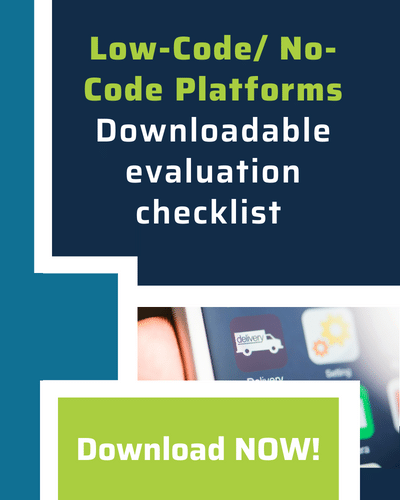As surprising as it may be, SAP ERPs have been around for almost 50 years—and despite best efforts by SAP to update, these systems typically struggle with meeting the demands presented by digitization, which is why there are various reasons SAP ERPs need to be modernized.
Before exploring the need for legacy modernization, it’s first important to understand what SAP ERPs are. SAP is a software company that provides an incredible ERP system – amongst other helpful software solutions. Standing for “Systems Applications and Products in Data Processing”, SAP’s ERP is known as an “all-in-one” solution that companies use to maintain all of its business operations including procurement, manufacturing, service, sales, finance and human resources.
SAP is a highly known and recognized name in ERP software and is considered among the best in the business, but still consistently utilizes ABAP coding that was created in 1972. So why should it be modernized?
If you’re curious about the why, read below to explore the 5 reasons SAP ERPs need to be modernized.
Legacy Coding Language
SAP was created by five former IBM employees with a goal of creating a standard app software for real-time business processing. At the time, it was revolutionary. And while it was updated consistently throughout the following years, it hasn’t been truly modernized.
Companies using outdated infrastructures are running into issues with customization and maintenance. Moreover, people who are familiar with ABAP are older now and the coding language isn’t being taught in today’s coding courses. Millennials are entering the workforce having to attempt to learn ABAP and essentially doing what they can to catch up. The coding language itself needs an update, so it can be more customizable and recognizable for those entering the workforce. This legacy modernization is necessary to keep up with technology systems.
Time-Consuming Implementation
Another reason SAP ERPs need to be modernized is due to their tedious work to implement. The implementation process of the software can sometimes take several years to activate while employees try to gain familiarity with it. Modernizing business systems would save wasted time spent trying to implement the system and allow automation where necessary- accelerating the speed at which implementation is completed.
See how Pillir’s low-code solutions for SAP can be implemented rapidly here.
Complexity
The actual infrastructure of SAP ERPs are highly complex. Due to the nature of the software and when it was created, its legacy system can sometimes be hard to maintain and implement. Simplicity is one thing that’s greatly lacking; requiring a lot of manpower and effort dedicated to maintenance of a platform that should be automating human resources related activity.
Cost
SAP ERP is expensive- and this is hurting rather than helping many small to medium-sized businesses. The overall costs generally include:
- Modules/features not included in base price
- Customization costs
- Consultancy costs
- And additional hardware costs
Summed up, general enhancements can cost anywhere from $75,000 and $750,000 for small to medium-sized businesses. For larger businesses, the cost can be anywhere from $1 million to $10 million.
The legacy modernization of SAP ERPs is not only necessary, but essential for companies that need to reduce costs. Modernizing with low code rapid application development platforms is essential. Converting legacy workflow and paper-based processes into digitized solutions, such as applications, can help modernize an SAP ERP system and also increase cost-savings, company-wide.
Read about how Villara Building Systems quickly and efficiently digitized manual processes in SAP ERP for their mobile workforces here.
Training
Along with the above reasons, training is also a large element to consider when thinking about why SAP ERPs need to modernized. With the current structure of legacy software, new employees need to be trained to learn about the complexity of the tools that have been built and the unique processes that have been implemented. This can be tedious and take weeks or months to complete, depending on what part of the tool you’re training for. Along with being tedious, it also adds to the costs associated with SAP ERP for a company as a whole.
With the ever-changing technology landscape, and recent economic changes due to the impact of COVID-19, today has never been a better time to start thinking about modernizing your ERP software. With rapid application development solutions offered by companies like Pillir, you can accomplish digitization quickly and easily, with little-to-no programming, by rapidly moving custom developments to the Edge.
Contact the Pillir team today to receive a complimentary copy of their Modernization plug-in for SAP that helps SAP customers identify legacy code, enhance their workflows and reduce technical debt within their existing SAP ECC or SAP S/4HANA systems.




 Back
Back/Logo%20-%20black%20text%20blue%20pillar%20(large)-1.jpg)

